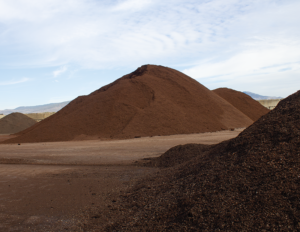Judging the Quality of Topsoil for Landscaping
Judging the quality of topsoil for landscaping is essential to ensure that your plants and garden thrive. Here are several factors to consider when assessing the quality of topsoil:
- Texture:
- Good topsoil should have a balanced texture, meaning it’s neither too sandy nor too clayey. Loam soil, which is a mixture of sand, silt, and clay, is often considered the best for landscaping.
- Sandy soil drains quickly but may not retain enough nutrients. Clayey soil retains moisture but may drain poorly and be prone to compaction.
- Organic Matter:
- High-quality topsoil contains a good amount of organic matter, like decomposed plant material (humus). Organic matter improves soil structure, moisture retention, and nutrient availability.
- pH Level:
- The pH level of the topsoil should be within the optimal range for the plants you intend to grow. Most plants prefer a slightly acidic to neutral pH (around 6.0-7.0), but this can vary depending on the species.
- Drainage:
- Good topsoil should provide adequate drainage to prevent waterlogging, which can harm plant roots. It should allow water to infiltrate but not drain too quickly.
- Nutrient Content:
- A quality topsoil will have sufficient nutrient content for plant growth. You can have your soil tested for nutrient levels to ensure they meet your landscaping needs. This can help you determine if any fertilization is necessary.
- Compaction:
- Compacted soil can hinder root growth and water infiltration. Squeeze a handful of soil; if it forms a tight ball, it may be too compacted
- Soil Structure:
- Quality topsoil should have a crumbly, granular structure that allows for good aeration and root penetration.
- Weed and Pest Presence:
- Inspect the topsoil for weeds, weed seeds, or pest larvae. Avoid soil with an abundance of these as they can cause problems in your landscaping project.
- Contaminants:
- Check for contaminants such as rocks, debris, and toxic substances. Remove any foreign materials that can harm your plants.
- Origin and Source:
- Consider the source of the topsoil. Soil from a reputable source or a local garden center is likely to be of higher quality. Local soil may also be better adapted to your region’s climate and conditions.
- Moisture Content:
- The topsoil should be moist but not overly wet. Extremely dry or waterlogged soil is not ideal for landscaping.
- Texture Test:
- Rub some topsoil between your fingers. If it feels gritty or too slippery, it may not be ideal for landscaping. It should have a crumbly and slightly sticky texture.
- Smell:
- Healthy topsoil should have an earthy, fresh smell. Foul odors can indicate problems with the soil.
Before purchasing or using topsoil for landscaping, it’s a good idea to have a professional soil test conducted. This will provide detailed information about your soil’s characteristics and help you determine if any amendments are required to meet your landscaping goals.




